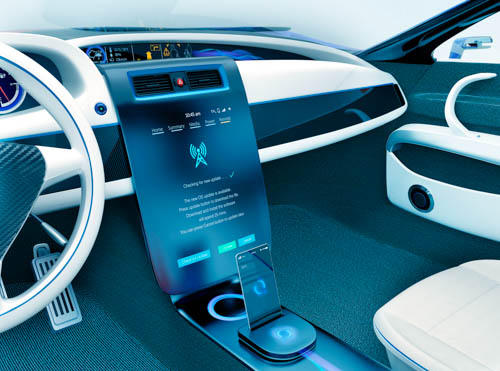About
 This program is now closed
This program is now closed
ICT drives the evolution of Advanced Driver Assistance Systems (ADASs). It enables higher levels of automated driving and ultimately fully Autonomous Vehicles (AVs).
AVs of the future will allow broader mobility offers including end-to-end Mobility-as-a-Service (MaaS). They will incorporate the latest ICT technologies like TSN/Ethernet, wireless communication, high definition maps, sensing, and various Machine Learning (ML) techniques to implement novel functions and features. AVs will embed high performance computing platforms and an unprecedented amount of SW.
Safety comes first for automated driving. Policy makers expect that AVs will significantly reduce the number of road fatalities (‘zero-accident’ vision). New technologies impose new challenges on safety engineering:
- Inductive reasoning
- Blackbox functionality
- Governance of algorithmic decision making
- Novel ICT-oriented vehicle architectures
- Redundancies and tradeoffs between enabling technologies
- Verification and validation of automation levels
Existing standards need to be evolved, and new standards are needed to ensure safety despite increasing automated driving complexity. Standards may specify functions, architectures, or processes.
Get Involved
We welcome new participants from large and small corporations, academia, industry, and government agencies that are interested in Assessment of Standardization Gaps for Safe Automated Driving. Key experts would include but are not limited to:
- Manufacturers of autonomous vehicles
- OEMs for autonomous systems
- Tier-x suppliers
- ICT companies
- Service providers
- Technology providers
- Policy makers
- Consumer representatives
Possible Industry Outcomes
Proposed deliverables and outcomes from this Industry Connections activity may include documents (e.g., white papers, reports), proposals for standards, conferences and workshops, databases, computer code, etc.
- White paper: The Safety Standardization Eco-System for Road Vehicles
- Report: Gap analysis (using white paper as a basis)
- Proposals for standards-related activities including PARs as needed
- Goals of this activity will be to:
- Identify relevant SDOs and industry alliances and other relevant organizations
- Identify, analyze, and assess existing standards and ongoing standardization activities
- Identify alternative approaches
- Identify overlaps
- Identify standardization gaps
- Identify options to bridge standardization gaps
- Develop and submit PARs to bridge standardization gaps
- Identify SDOs to partner with “and develop recommendations for” the level of engagement:
- Explore the mutual interest to enter a formal agreement
- Set up liaison relationships
- Harmonize work programs
- Joint development
- Serve as a collaborative platform to exchange information about ongoing standards-related activities and synchronize these activities as needed
How to Participate
To learn how to join the Assessment of Standardization Gaps for Safe Automated Driving team, please express your interest by sending an inquiry to:

